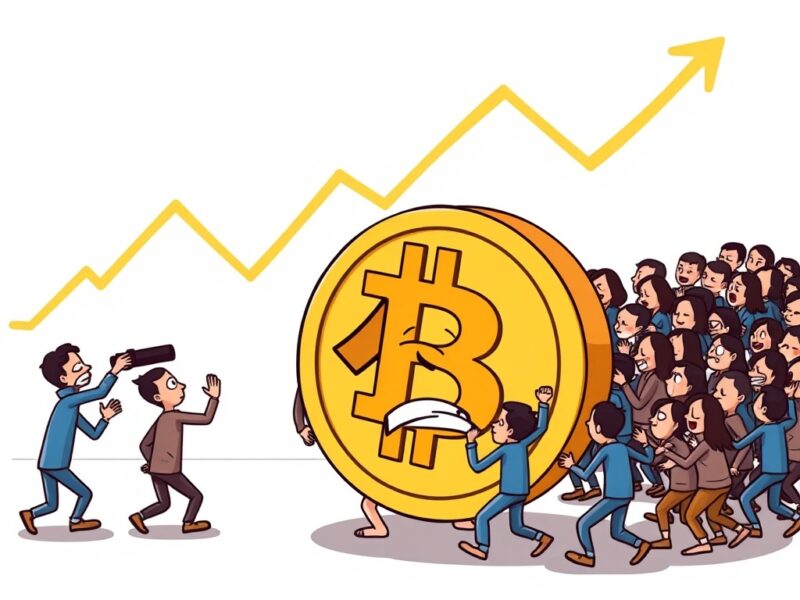Starting from haircut, why can’t Bitcoin become a currency?
A little useless thought: Why will the price of Bitcoin rise steadily in the long run? And why Bitcoin may not be able to become the first currency?
Let’s start with an interesting question: why are haircuts getting more and more expensive?
The barbering industry has many unique characteristics. First, productivity is nearly impossible to improve. A haircut took 30 minutes in 1950, and it still takes 30 minutes today. While tools have improved, these improvements haven't significantly improved efficiency.
Haircuts cannot be mass-produced and must be a one-on-one service. Machines cannot replace human labor.
Haircuts cannot enjoy the convenience of globalization. We cannot send our hair to countries with cheap labor to get it cut and then send it back to be fixed.
While factory production efficiency has likely increased more than 10 times since 1950 due to automation, informatization, and mechanization, the efficiency of hairdressing has not changed much.
But the barber’s salary must keep up with the social average, otherwise no one will be willing to be a barber.
(This will force the barber industry to transform, such as further improving efficiency with "10 yuan quick cuts" and justifying high-priced "styling" services, etc., but of course this is another topic.)
This phenomenon is called "Baumol effect" or "Baumol's cost disease" in the field of economics.
The same is true for rising gold prices.
Technological advances have led to significant increases in industrial efficiency and lower commodity prices.
In contrast, the production of US dollars is constrained by geological conditions, resulting in limited efficiency gains. Furthermore, mining is subject to policy restrictions.
Don't forget that during the gold standard era, gold was indirectly used for pricing.
When industrial technology advances faster, under the same conditions, 100 commodities and 100 units of gold were produced before, but after a period of time, 1,000 commodities are produced corresponding to 100 units of gold. The price of commodities falls, and in contrast, the price of gold rises.
The rise in gold prices forced the United States to abandon the Bretton Woods system. (Yes, I think many of the existing explanations reverse causality.)
After the 1970s, the average annual inflation rate in the United States remained at around 3%, while the price of gold rose from US$170 per ounce to more than US$3,000 today, far exceeding the annual compound interest rate of 3%.
Why will the price of Bitcoin rise steadily in the long run?
Yes, the same thing will happen with Bitcoin.
Although Bitcoin mining relies on computing power, computing power may explode exponentially after breaking through a certain singularity.
However, Bitcoin mining rewards are the result of competition among computing power, and the block time is constant at around 10 minutes due to difficulty adjustment.
The most important thing is that the increase in computing power has no impact on the total amount of Bitcoin, which remains at 21 million.
Therefore, when the continuously growing global legal currency issuance and the ever-increasing commodity production efficiency correspond to Bitcoin, which relies on algorithms to maintain a constant block time and total amount, the price of Bitcoin will only rise steadily in the long run, just like gold.
Why can't Bitcoin be a currency?
Similarly, similar to gold, Bitcoin cannot become a currency under the current credit economic system.
The main reasons are as follows:
1) Deflation will be widespread. As mentioned earlier, as productivity increases, commodity prices will fall relative to the price of Bitcoin, so that a commodity originally worth 1 BTC may only be worth 0.5 BTC after a period of time.
The problem is that in order to expand their scale, companies choose to borrow money, but because commodity prices have fallen compared to Bitcoin prices, the actual debt will increase and the burden will increase.
2) Price fluctuations make inflation and deflation unpredictable. This uncertainty can disrupt business production. Modern central banking systems have a range of sophisticated methods to stabilize inflation, ensuring predictable and consistent data, which is crucial.
For example, why does hyperinflation in countries like Zimbabwe get higher and higher instead of staying at a relatively high level? Because what is really harmful is inflation that exceeds expectations.
Because the government's inflation level changes continue to exceed original expectations, note that it is "continuously", so when everyone sets prices next time, they will further take into account the inflation costs they bear, turning it into a negative-sum game "prisoner's dilemma".
This will eventually lead to more and more inflation.
3) The central bank cannot assume the role of lender of last resort. Because Bitcoin’s supply is limited, if it is used as a currency or a monetary anchor, banks cannot print money to lend to businesses in times of crisis, and thus cannot achieve a flexible money supply.
This is also the main reason why the gold standard gradually faded out of history.
Previously, MicroStrategy founder Saylor said that uselessness will become the future cyber age. This may be very difficult, so difficult that global wealth will reach its peak and no longer grow, and debt will no longer expand. Perhaps there will be an opportunity by then.
But no matter what, the price of BTC will definitely rise in the long run.
You May Also Like

DOGE to $1 Still Possible, But This Meme Coin Could Turn $20 Into $2,000

Bitcoin Selling Pressure: Crucial Analysis Reveals Short-Term Holder Impact
